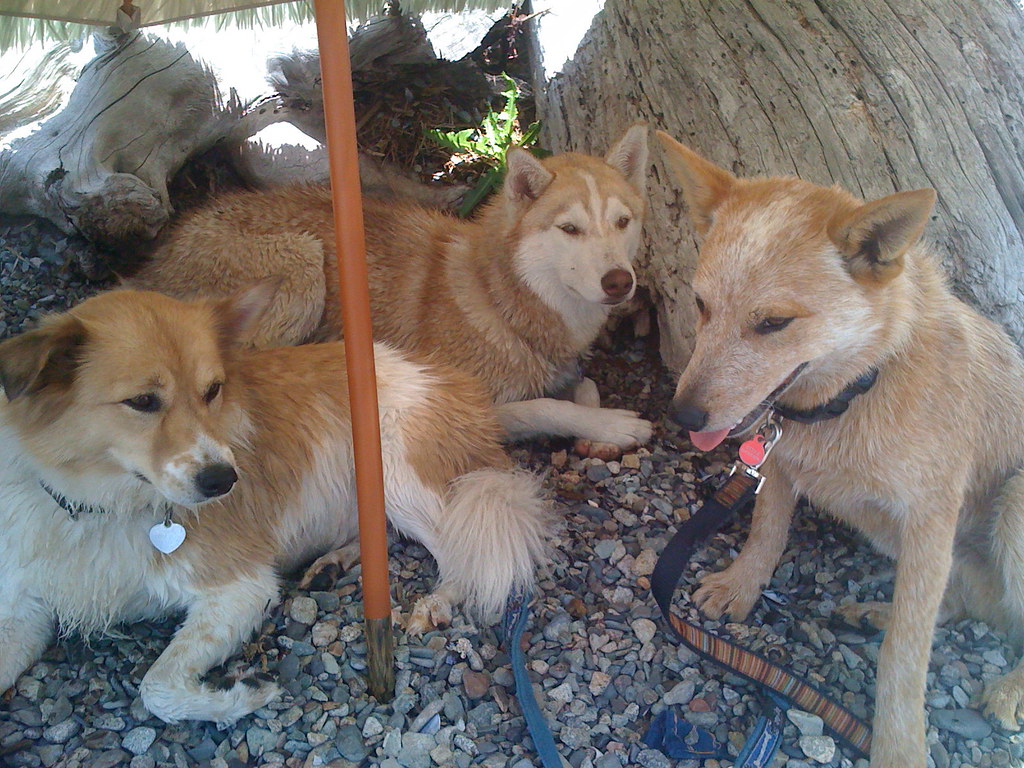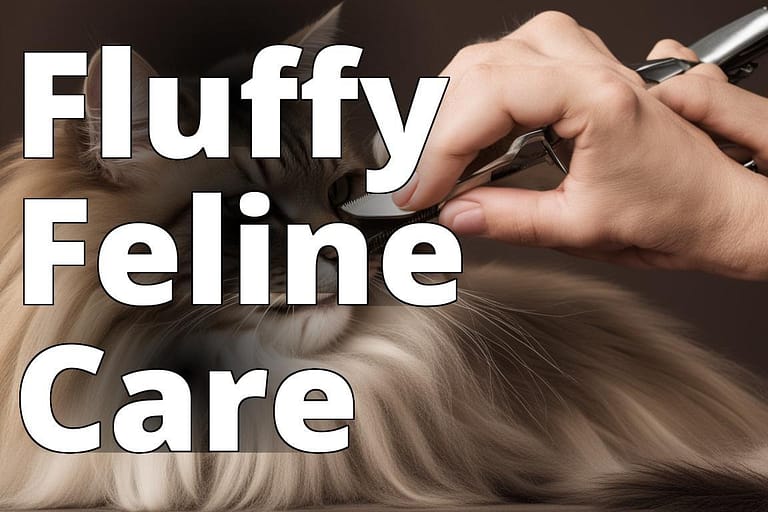Why I Love My Pet: A Comprehensive Guide to Pet Care
I Love My Pet: A Comprehensive Guide to Pet Care
If you are reading this article, chances are you love your pet and want to provide them with the best possible care. Owning a pet is a rewarding experience that comes with many responsibilities, such as ensuring their health and happiness. In this comprehensive guide, you will learn various tips and techniques for proper pet grooming, the best nutritious food options for pets, training and behavior modification for pets, and pet-friendly activities and destinations. Additionally, this guide covers common health issues and prevention, and it includes personal stories and experiences related to pet care and the bond between pets and their owners. Whether you are a new pet owner or a seasoned pet lover, this guide will help you strengthen the bond between you and your furry friend by teaching you how to provide them with the love and care they deserve.

Tips for Proper Pet Grooming
Grooming is an essential part of pet care that helps keep your pet’s coat healthy and shiny. Proper grooming can also prevent skin infections, mats, and tangles. Here are some tips for proper pet grooming:
Bathing and Brushing
Different pets have different grooming needs. Dogs, for example, need to be bathed more often than cats. However, too much bathing can strip their skin of natural oils and cause irritation. It’s essential to use pet-specific shampoos and conditioners and follow the instructions carefully. Brushing your pet’s coat regularly can help remove loose fur, dirt, and debris and distribute natural oils throughout the coat. This can help prevent matting and tangling.
Nail Trimming
Long nails can be uncomfortable and painful for your pet, and they can also cause damage to your furniture and floors. It’s essential to trim your pet’s nails regularly, but it can be a challenging task. If you’re not comfortable doing it yourself, you can take your pet to a professional groomer or veterinarian. It’s important to use pet-specific nail clippers and avoid cutting the quick, which is the pink part of the nail that contains blood vessels and nerves.
Ear Cleaning
Regular ear cleaning can help prevent ear infections and keep your pet’s ears healthy. You can use a pet-specific ear cleaning solution and cotton balls to gently clean the outer ear canal. It’s essential to avoid inserting anything into the ear canal, as this can cause damage.
Teeth Brushing
Just like humans, pets need dental care to prevent tooth decay and gum disease. You can use a pet-specific toothbrush and toothpaste to brush your pet’s teeth regularly. It’s important to start brushing your pet’s teeth when they are young to get them used to the process. If your pet is resistant to tooth brushing, you can try dental chews and toys to help keep their teeth clean.
Importance of Regular Check-Ups
Regular check-ups with your veterinarian are crucial for maintaining your pet’s health. During these visits, your vet can check for potential health issues and provide preventative care. For example, they can check your pet’s ears, teeth, and overall health. They can also provide vaccines and medications to prevent or treat illnesses. By staying on top of your pet’s health, you can catch potential issues early and provide them with the necessary care and treatment.
Personal Story
My dog, Max, is a 5-year-old Golden Retriever who loves to play fetch and go on long walks. One day, I noticed that he was limping and seemed to be in pain. I took him to the vet, and they diagnosed him with hip dysplasia, which is a common condition in larger dog breeds.
The vet recommended a few different treatments, including medication and physical therapy. We started Max on a joint supplement to help reduce inflammation and improve mobility. We also began a physical therapy program that included exercises to strengthen his hip muscles.
After a few weeks of treatment, I noticed a significant improvement in Max’s mobility and overall comfort. He was able to run and play without limping, and he seemed much happier and more energetic.
Through this experience, I learned the importance of regular check-ups with the vet and staying on top of any potential health issues. It’s also essential to provide your pet with the necessary care and treatment to ensure they live a happy and healthy life.

Best Nutritious Food Options for Pets
Proper nutrition is essential for keeping your pet healthy, active and happy. In this section, we will explore some of the best nutritious food options for pets:
Raw Food Diet
A raw food diet is a natural diet for pets, consisting of uncooked meat, bones, fruits, and vegetables. The diet promotes healthy digestion, stronger bones, shinier coats, and better dental health. However, before switching to a raw food diet, it is crucial to consult with a veterinarian to ensure that the diet meets your pet’s nutritional needs. Some raw diets may lack essential vitamins and minerals, and others may contain harmful bacteria that can cause adverse health effects.
Organic Pet Food
Organic pet food is made with high-quality, organic ingredients and does not contain artificial colors, flavors, or preservatives. Organic pet food can provide your pet with the nutrients they need to maintain good health. It is an excellent choice for pets with allergies or sensitivities to artificial ingredients. Organic pet food promotes a healthy digestive system, reduces inflammation and promotes healthy weight.
Grain-Free Pet Food
Grain-free pet food is made without grains such as wheat, corn, and soy. This type of pet food can be beneficial for pets with grain allergies or sensitivities. Grain-free pet food promotes healthy digestion, reduces inflammation, and supports healthy weight. However, it is crucial to ensure that the grain-free diet contains other sources of carbohydrates to provide sufficient energy for your pet.
Homemade Pet Food
Homemade pet food can be an excellent way to ensure that your pet is getting high-quality, nutritious food. You can tailor the diet to your pet’s specific needs and preferences, and it can be a more affordable option in the long run. However, it’s essential to consult with a veterinarian or animal nutritionist before switching to a homemade diet, as it can be challenging to meet all of your pet’s nutritional needs. Homemade pet food can cause nutritional imbalances, leading to health problems such as vitamin deficiencies, and it can be challenging to ensure that the diet contains all the essential nutrients your pet needs to stay healthy.

Training and Behavior Modification for Pets
Training and behavior modification are crucial aspects of pet ownership that can help your pet become a well-behaved and well-adjusted member of your family. Here are some effective techniques that you can use to ensure your pet’s good behavior:
Positive Reinforcement Techniques
Positive reinforcement techniques involve rewarding your pet for good behavior. This could include giving treats, praise, and affection. Positive reinforcement is a more effective and humane method of training than punishment-based techniques. It encourages your pet to repeat good behavior and strengthens the bond between you and your pet.
Clicker Training
Clicker training is a type of positive reinforcement training that uses a clicker to mark good behavior. The clicker is a small device that makes a clicking sound when pressed. Clicker training can be used to teach your pet a wide range of behaviors and tricks. This technique is ideal for pets that are motivated by food and toys.
Crate Training
Crate training can help your pet feel safe and secure when you’re not home. It can also aid in potty training and prevent destructive behavior. It’s essential to choose the right size crate for your pet and make it a comfortable and inviting space. You should introduce your pet to the crate gradually and use positive reinforcement to make it a positive experience.
Socialization
Socializing your pet can help them feel comfortable around other animals and people. Early socialization is essential for puppies and kittens, but it’s never too late to start socializing your pet. You can take your pet to dog parks, training classes, and other social events to help them become more comfortable around others. Providing positive experiences will help your pet develop good social skills and prevent aggressive behavior.
Behavior Modification Techniques
Behavior modification techniques can be used to correct unwanted behaviors in your pet. These techniques involve identifying the cause of the behavior and changing it by reinforcing positive behaviors and discouraging negative ones. Consult with a professional trainer or veterinarian if you’re having difficulty changing your pet’s behavior.
By using these techniques, you can train your pet to exhibit good behavior and strengthen your bond with them.

Pet-Friendly Activities and Destinations
As pet owners, we all want our furry friends to have fun and enjoy life just like we do. Thankfully, there are plenty of pet-friendly activities and destinations that can help us do just that. Here are some ideas that you and your pet can enjoy together:
Hiking Trails
Hiking can be a great way to exercise and enjoy nature with your pet. However, before you hit the trails, make sure to research the trail’s pet policy and difficulty level to ensure it’s a good fit for both you and your pet. Also, bring plenty of water, snacks, and a first-aid kit for you and your pet.
Dog Parks
Dog parks are great for pets to play and socialize with other dogs and their owners. However, it’s important to choose a safe and fun dog park that is suitable for your pet’s size, temperament, and play style. Always follow the park’s rules and regulations, and supervise your pet at all times.
Pet-Friendly Beaches
A day at the beach can be a fun and refreshing experience for your pet. However, not all beaches allow pets, and some may have restrictions on where and when pets are allowed. Before you go, research the beach’s pet policy and bring plenty of water, shade, and sunscreen for your pet. Also, make sure your pet is comfortable in the water and supervise them at all times.
Pet-Friendly Vacation Rentals
If you’re planning a vacation, why not bring your pet along? Many vacation rentals now allow pets, which can make your trip more enjoyable for everyone. However, it’s important to choose a rental that is pet-friendly and suitable for your pet’s needs. Always follow the rental’s rules and regulations, and bring familiar items from home to help your pet feel comfortable and secure.
Remember, spending quality time with your pet is a great way to strengthen the bond between you and your furry friend. So, choose an activity or destination that you both can enjoy, and have fun!

Common Health Issues and Prevention
Pets are prone to a variety of health issues, but many of them can be prevented with proper care. In this section, we will discuss the most common health issues that pets face and provide tips on how to prevent them:
Fleas and Ticks
Fleas and ticks can cause discomfort and can transmit diseases to your pet. To prevent flea and tick infestations, use flea and tick preventives and check your pet regularly for signs of infestation. Signs of infestation include excessive scratching, biting, or licking, and the presence of flea dirt or ticks on your pet’s skin.
Heartworm Disease
Heartworm disease is a serious and potentially fatal disease that is transmitted by mosquitoes. It’s essential to use heartworm preventives and to have your pet tested regularly. Heartworm preventives come in the form of chewable tablets, topical solutions, and injectable medications. Heartworm testing involves a simple blood test performed by your veterinarian.
Dental Health
Dental health is essential for your pet’s overall health and well-being. Poor dental hygiene can lead to bad breath, tooth decay, and gum disease. To maintain good dental health, brush your pet’s teeth regularly using a toothbrush and toothpaste specifically designed for pets. You can also provide dental chews and toys that help remove plaque and tartar buildup.
Obesity
Obesity can lead to a variety of health problems, including diabetes, heart disease, and joint problems. To prevent obesity, feed your pet a healthy diet and provide regular exercise. Avoid feeding your pet table scraps and high-calorie treats. Instead, opt for healthy treats like fresh fruits and vegetables. Regular exercise can include activities like walking, playing fetch, and swimming.
Conclusion
In conclusion, pet care should be an essential part of being a responsible pet owner. By following the tips and techniques outlined in this guide, you can help ensure that your pet is happy, healthy, and well-cared for. Always consult with a veterinarian or animal nutritionist before making any changes to your pet’s diet or health care routine. They can provide expert advice on the best care practices for your pet’s specific needs.
Moreover, don’t forget to shower your furry friend with love and affection. The bond between pets and their owners can be strengthened through regular grooming, healthy food, and training exercises. You can also create unforgettable memories by taking your pet on pet-friendly hikes, to the beach, or on vacation with you.
We hope that you found this guide helpful and informative. If you’re looking for pet care accessories, be sure to visit our shop for a variety of products that can help you care for your pet and improve their quality of life.
Q & A
Who can I contact for pet care advice?
You can contact a veterinarian or animal nutritionist for expert pet care advice.
What are some tips for keeping my pet healthy?
Proper grooming, nutritious food, regular exercise, and preventative care are essential for pet health.
How often should I take my pet to the vet?
It’s recommended to take your pet to the vet at least once a year for a check-up and preventative care.
What should I do if my pet has a behavior problem?
Consult with a professional trainer or veterinarian for advice on behavior modification techniques.
How can I keep my pet safe from fleas and ticks?
Use flea and tick preventives, check your pet regularly for signs of infestation, and keep your home and yard clean.
What if my pet doesn’t like grooming?
Start with short grooming sessions and use positive reinforcement techniques to make it a positive experience for your pet.




Leave a Reply